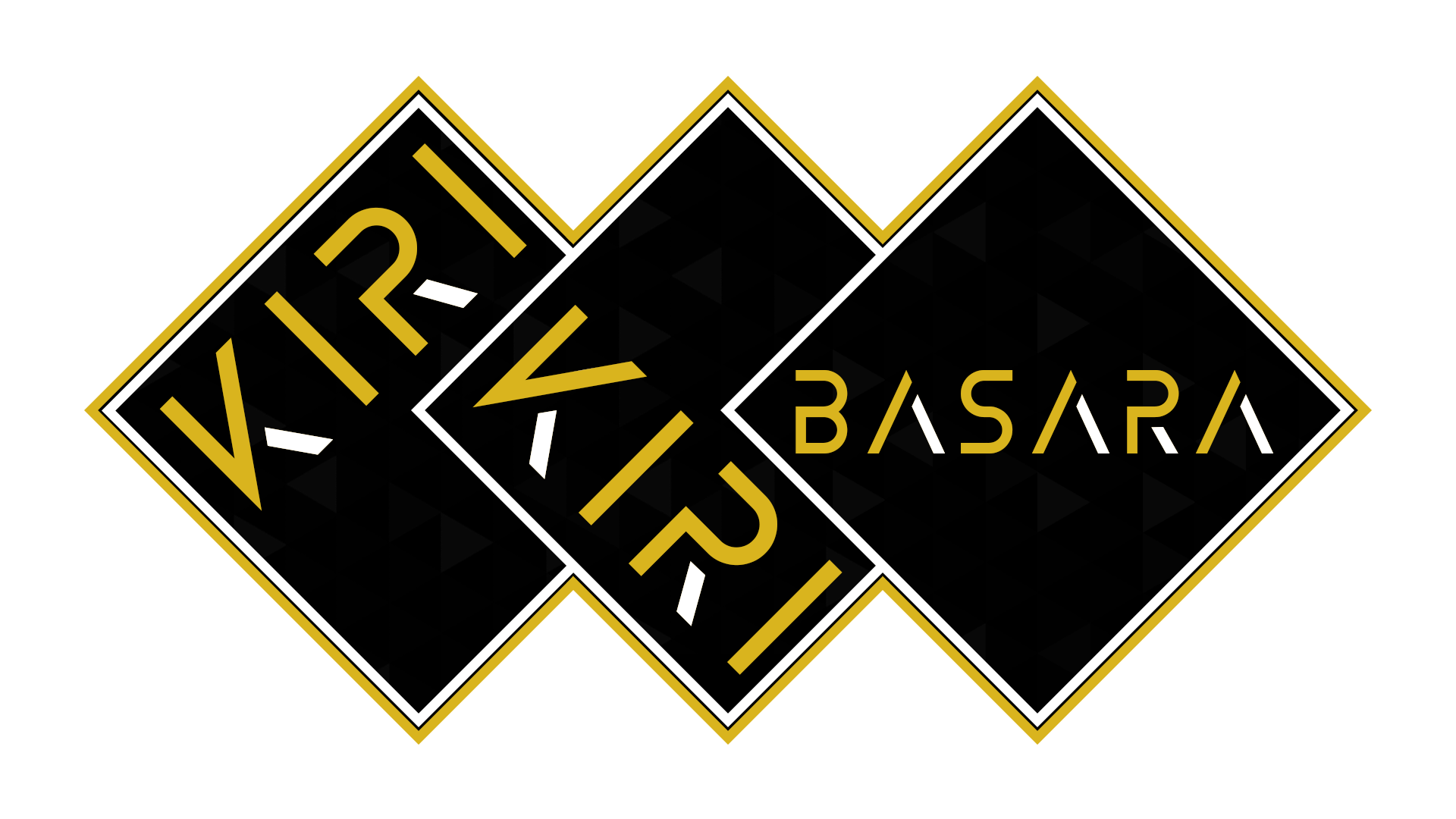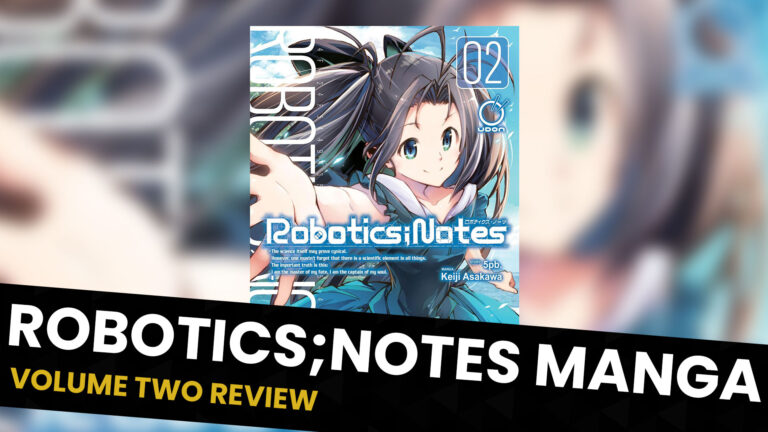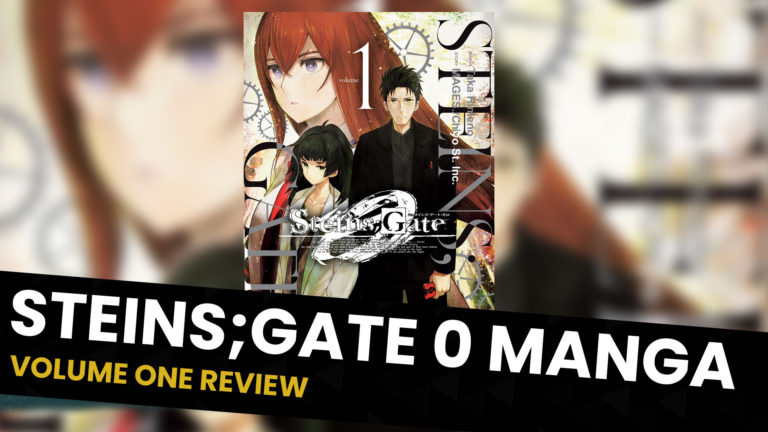Ojarimouse (Welcome), everyone! I’m Enorovan—also known as Eno—and today, just two years after the localization of the Steins;Gate 0 manga and the rerelease of Steins;Gate’s, we’re back to talk about the first volume of the Robotics;Notes manga, by Keiji Asakawa! This manga was originally released in 2012 in Japan, and is now being published in the west by UDON Entertainment, with a translation by SciADV series veteran translator Andrew “Steiner” Hodgson.

First, a pro tip
Before I dig in, allow me to establish some context. Robotics;Notes is the third mainline entry in the Science Adventure series, a series that is so dear and close to my heart that most of my adult life’s free time has been spent working on projects surrounding it or talking about it with other fans and newcomers. From Chaos;Head NoAH to Anonymous;Code, I’ve had the privilege of reading it all, and that includes most of the complementary media—manga, light novels, and so on.
In terms of manga adaptations, that includes the aforementioned Steins;Gate manga localizations (which we’ve been incredibly lucky to see released for Western audiences in recent years, and I hope to see this trend continue). I’ve also previously imported the manga adaptations of Chaos;Head Love Chu☆Chu and Chaos;Child to read in Japanese. Needless to say, I’d been able to more or less set my expectations in check in terms of what Robotics;Notes would have in store for me.
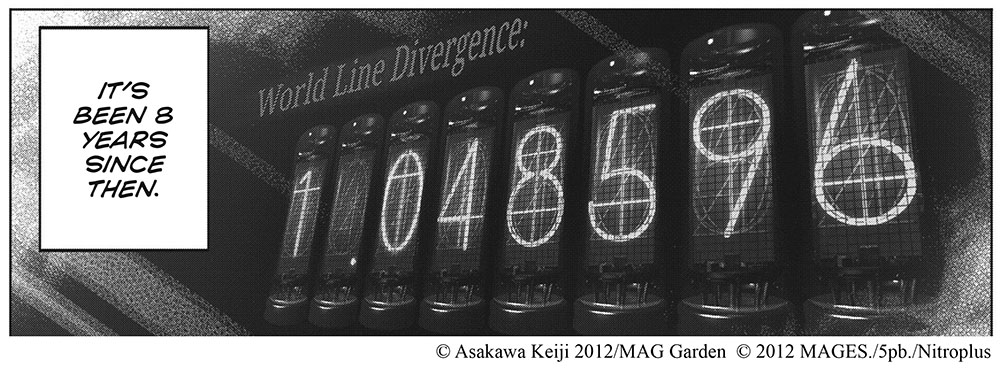
All right. With that out of the way, let’s get right into my review of the 316-page-long(!) first volume.
(Please note that a complementary digital copy of Volume 1 was provided to us by the publisher for review purposes; this has not influenced the opinions expressed herein in any way.)
The crystallization of paneling, tips, and emotional peaks
Paneling isn’t usually very relevant to the Science Adventure series, but in Robotics;Notes, it very much is, given that we get to see some actual robot fights. In this regard, the Robotics;Notes manga excels, making it an absolute treat to read. It flows quite well and is generally seamless and easy to follow; I found I was able to naturally follow the flow of each dialogue bubble without really ever needing to search for the next one.
To me, the flow in particular is critical to the manga reading experience, though it isn’t a factor that’s always respected or paid enough attention, even in the biggest releases today—yes, I’m talking to you, My Hero Academia. It was definitely a welcome surprise to see it done so well, and in such a relatively niche adaptation at that.
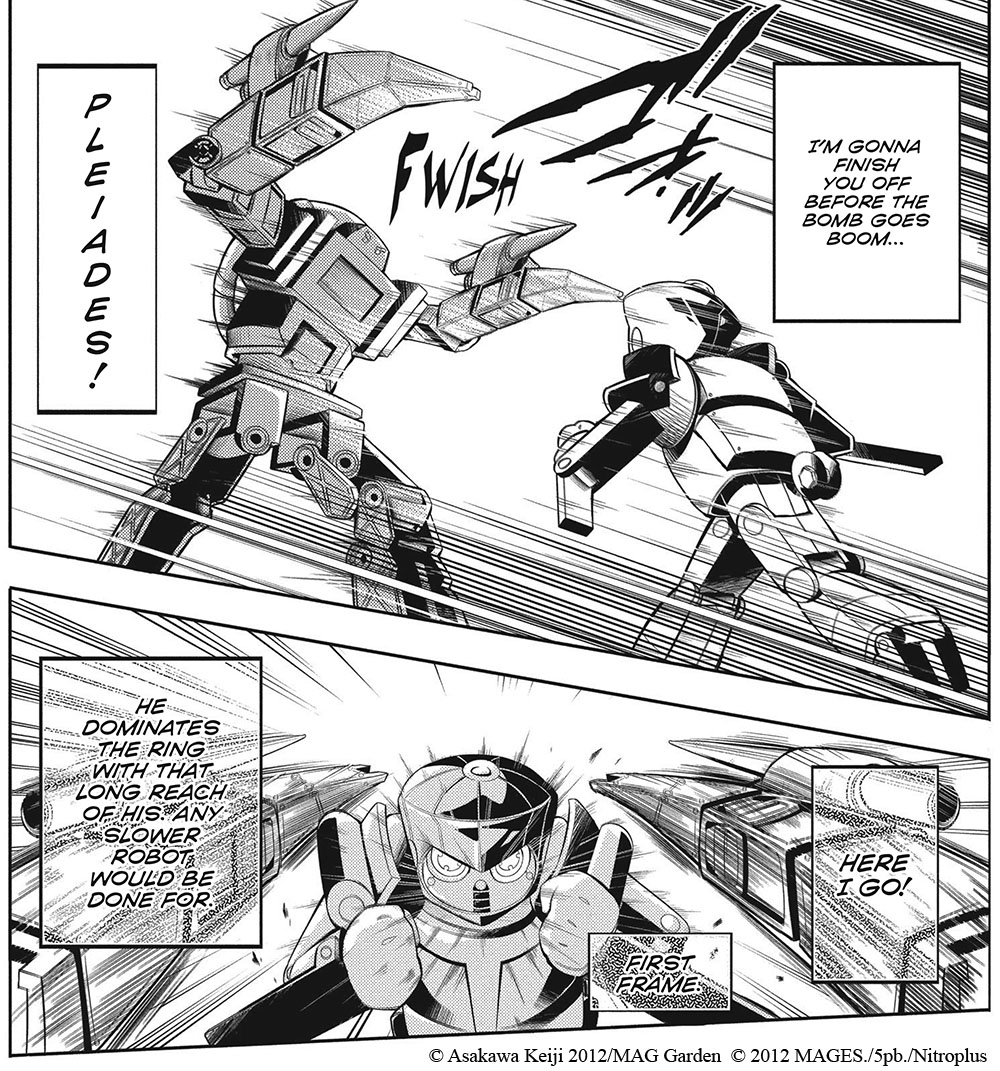
I have to talk about the art too! Much like how it’s done in the Robotics;Notes visual novel, the vast majority of the manga’s art is on-model, with only a few egregious close-ups—though nothing out of the ordinary. HOWEVER! Keiji Asakawa’s portrayal of Kaito’s and, to a greater extent, Akiho’s emotions is absolutely divine. What the visual novel wasn’t able to achieve on that front, the manga more than certainly did. Akiho shines bright in these pages, and it’s extremely refreshing to see her (and others) in a new light.
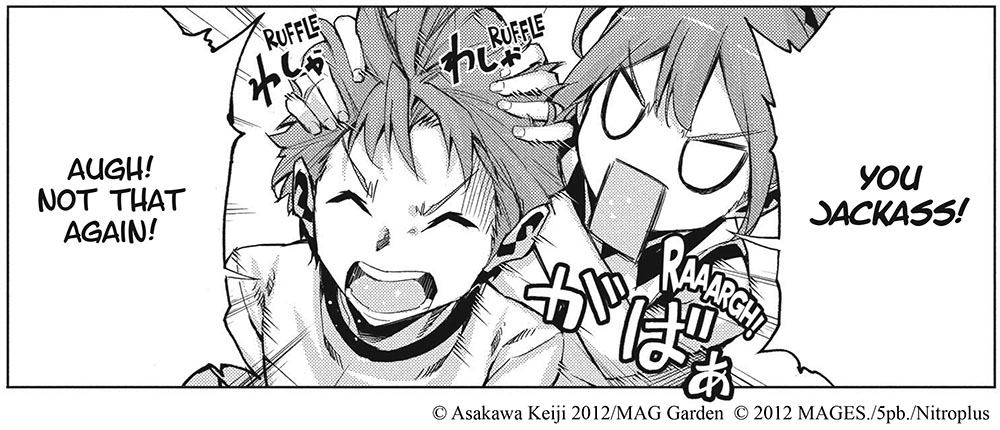
In terms of the text side of things, with this adaptation, the manga chooses to be realistic, providing a “Tips” page at the beginning of most chapters. These Tips sections cover terms and concepts used in the story that are obscure enough to deserve a definition. I do personally prefer this approach over the asterisk method, where the words, when used within the chapter, might have an asterisk appended to it, and the definition provided somewhere else on the same page. This approach tends to leave the reading experience feeling a whole lot less seamless in my view. The current approach, though, should be familiar to the bunch of you that’ve read the visual novel(s).
There’s only one, really small downside I encountered: much like in the Steins;Gate 0 manga, some of this manga’s VFX are translated but only appended next to the Japanese VFX; others of them may be fully redrawn and replaced, which is the higher quality approach. It’d have been nice if all of them had been redrawn, but this won’t impact my rating at any rate—the fact that they’re all translated, at least, means that what’s been done here is actually already above industry standards. I just figured I should mention it for any of you typesetters in the (Kill-Ballad) chat.
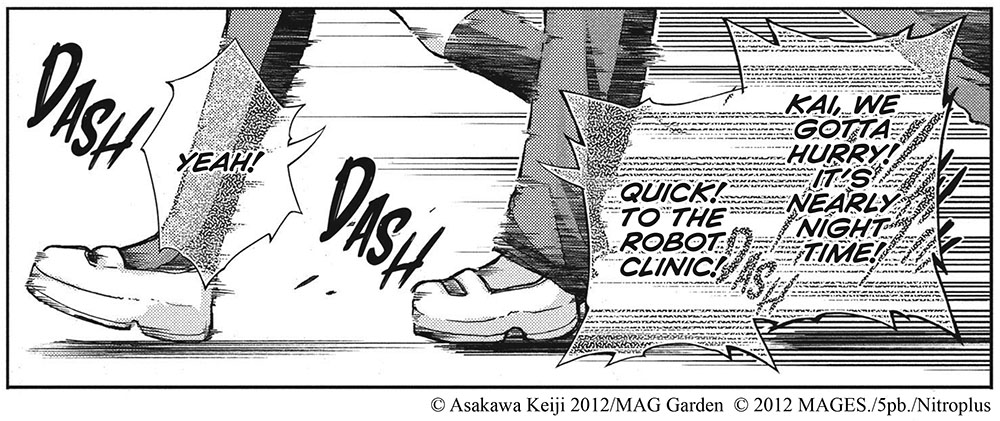
One last concern—not really a complaint, yet—that I have to voice relates to the pacing of this manga. The English Volume 1, in its entirety, covers Phase (Chapter) 01 of the visual novel, out of 12. There are only two volumes left in this series… meaning they’ll each need to cover five to six Phases each to see the Robotics Club’s story through to its conclusion.
While this volume’s pacing didn’t feel particularly slow—it even went as far as to trim some needless fat and rearrange some parts of the story—I’ll admit I’m a bit concerned that Volumes 2 and 3 may end up running too fast, leaving it feeling more like Robotics;Notes’s rushed anime adaptation than the stellar source material. I haven’t read this manga series in Japanese, so I suppose we’ll all be finding out how it goes from here.
An impactful localization
Robotics;Notes’s localization is, as per usual when it comes to Andrew Hodgson’s work, absolutely wonderful. It perfectly relates the Robotics Club and friends’ individual characterizations in English from the original Japanese. Moreover, it’s clear Hodgson has done his research as it comes to terminology, particularly the Science Adventure references, Gunvarrel terms, and “that guy’s” quotes.
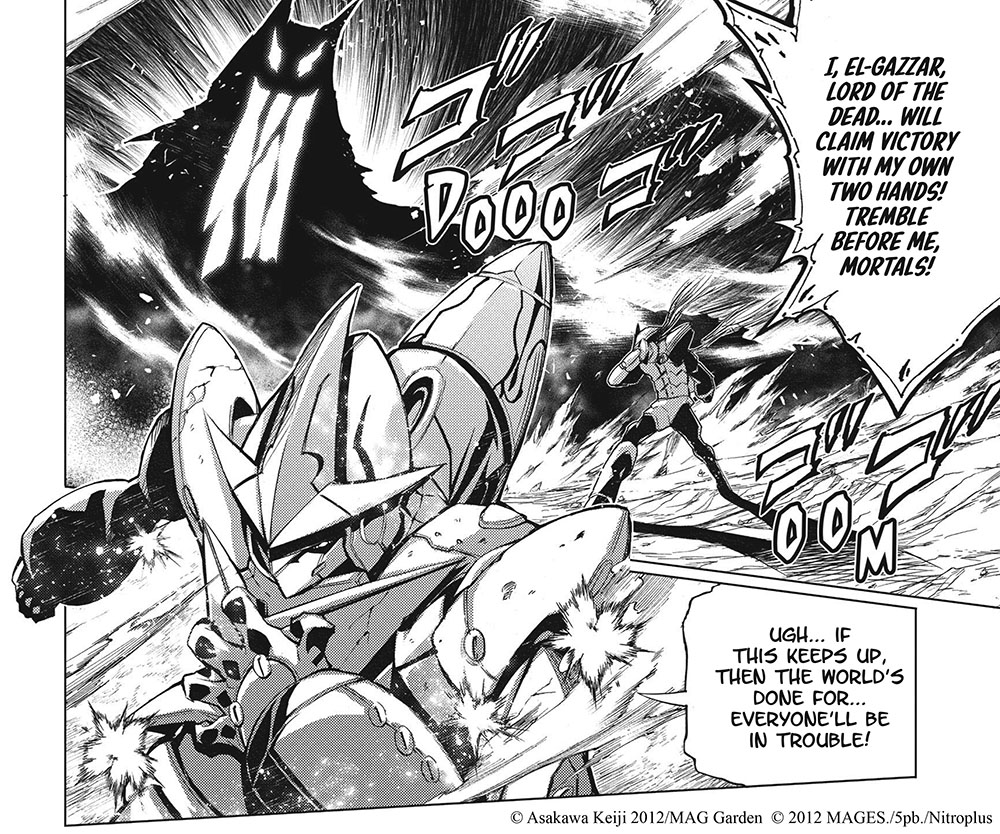
It’s a perfectly pleasant read overall, much like the recent Anonymous;Code localization, which—you guessed it—Hodgson also helmed. Robotics;Notes exudes emotions and style, while still remaining perfectly true to its source. To be frank, I much prefer this effort over the localized visual novel’s own.
One in body and soul
Akiho and Kaito. Aki and Kai. AKI-PO and UMISHO. This childhood-friend duo is the focal point of Robotics;Notes. They’re the most important facet of the story, and any material that assumes the name “Robotics;Notes” must handle them with great care, like the polished diamonds of characters they are.

And yeah, in case it wasn’t clear, the first volume lives up to that responsibility oh so well. Asakawa’s depiction of Aki and Kai was so impactful, I almost felt like I was playing the excellent visual novel again. Volume 1’s characterization often feels like a strong reflection of what makes the visual novel’s so great—the perfect window into those nostalgic memories if you’ve already read it, or an overall fun time if you’re a newcomer. Aki and Kai’s dynamic is chef’s-kiss perfect here—and where the manga seeks to make changes, it makes improvements, not downgrades.
Akiho is the dedicated, energetic gal she’s always been, which is consistently radiated in both her dialogue and her art. She is passion incarnate for the giant robot building project, and you will never not feel that energy. Kaito, much like in the source, is rather apathetic to begin with—but the localization is careful not to fall into the trap of making him condescending, too. He’s still the funny, chill, and (secretly) reliable protagonist I’ve grown to like quite a bit.
If you liked watching Kai and Aki interact in the visual novel, this manga will be a blast to the past in all the right ways, allowing you to experience those memories anew. The limited format means you’re not going to see every little detail of their relationship that the source offered, but the beauty here is that you get to see their best moments in a fresh new format.

Let’s go to Volume 2!
Robotics;Notes Volume 1 managed to answer to all of my expectations and even surpass them. Now more than ever, I’m nostalgic for the visual novel I read over three years ago—the one that left me with so many good memories I’d tucked away, now fresh on my mind thanks to this brilliant adaptation. Asakawa’s checked all the boxes of what a good adaptation should aim for, making only a few natural, and perfectly reasonable modifications along the way. Volume 2 cannot come soon enough, and I can’t wait to see the Robotics Club’s next members, well, join the club!
9.5/10
While sometimes it suffers from a few aggressive skip-overs and a few presentational oddities, Robotics;Notes Volume 1 is a very competent localization and adaptation of the first chapter of one of the best group-focused stories I’ve ever read. This series is off to a great start, though I remain cautious about how its pacing may play out overall.
Robotics;Notes Volume 1 is out now via Amazon, Barnes & Noble, RightStuf, and Waterstones. An exclusive hardcover variant, featuring alternate cover art and bonus fold-out posters, is also available via Barnes & Noble.
Volumes 2 and 3 are expected to follow in January and March 2024 respectively. Learn more about the series on UDON Entertainment’s official website.
